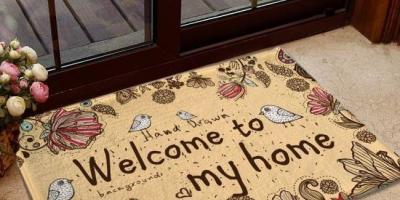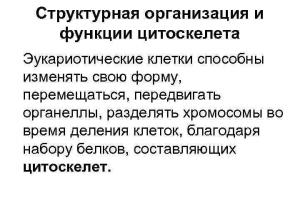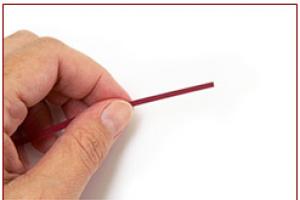There are two levels of hand treatment for medical personnel:
hygienic hand washing with soap,
hygienic treatment of hands with skin antiseptic (without pre-washing).
Hand hygiene:
Treatment of surgeons' hands.
Hand hygiene.
Target: removing contaminants and reducing the number of microorganisms to a safe level (prevention of HAIs).
Indications:
before direct contact with the patient;
after contact with the patient’s intact skin;
before performing various patient care procedures;
after contact with biological media of the body, mucous membranes, dressings;
after contact with medical equipment and other objects located in close proximity to the patient;
after treating a patient with purulent inflammatory processes;
after each contact with contaminated surfaces and equipment.
Contraindications: individual intolerance to the soap or skin antiseptic used.
Effectiveness conditions:
short-cut nails;
lack of nail polish;
absence artificial nails;
absence jewelry on the hands (rings, rings, etc.);
provision of sufficient quantities of effective means for washing and disinfecting hands, as well as products for hand skin care (creams, lotions, balms).
Hygienic hand washing with soap.
Equipment: a sink equipped with a faucet with an elbow (touchless) valve; liquid soap; dispenser for liquid soap(elbow or other non-contact); paper towels (or individual cloth towel); paper towel holder; pedal bin with class A waste bag.
Manipulation algorithm:
|
Stages |
Rationale |
|
1. Preparation for the procedure |
|
|
1.1. Check the conditions necessary for effective hand washing. | |
|
1.2. Prepare everything you need. |
|
|
1.3. Stand in front of the sink, trying not to touch its surface with your hands and clothes. |
Prevention of contamination of hands and clothing. |
|
1.4. Turn on the water and adjust the water temperature to a comfortable value (35-40 o C). |
Optimal temperature for hand decontamination and prevention of dermatitis. |
|
2. Performing the procedure (Fig. 2) |
|
|
2.1. Wet your hands with water. |
Efficiency of manipulation. |
|
2.2. Apply soap to your palm using an elbow dispenser (or any other). |
Prevention of hand contamination. |
|
2.3. Rub palm against palm. |
Ensuring uniform decontamination of hands. |
|
2.4. Rub your right palm over the back of your left hand and vice versa. |
|
|
2.5. Treat the spaces between the fingers: rub your palms with your fingers crossed and spread out. |
|
|
2.6. Interlock your fingers and rub the back of your bent fingers across the palm of your other hand. |
|
|
2.7. Rub your thumbs alternately in a circular motion. |
|
|
2.8. Rub your palm alternately with the fingertips of the opposite hand in multidirectional circular movements. |
|
|
2.9. Rinse off the soap running water. Note: dose of liquid soap and treatment time according to instructions for use. |
Efficiency of manipulation. |
|
3. End of the procedure |
|
|
3.1. Turn off the water using the elbow tap. | |
|
3.2. Dry your hands with a paper towel (individual cloth). |
Efficiency of manipulation, prevention of contact dermatitis. |
|
3.3. Throw away paper towel into the pedal bin containing the Class A waste bag without touching it. |
Proper handling of Class A medical waste. Prevention of hand recontamination. |
|
Note: If the sink does not have a touchless faucet, first wipe your hands, then close the valve, using the paper towel used to dry the nurse's hands. | |
Rice. 2. Hygienic hand washing with soap.
Hygienic treatment of hands with skin antiseptic.
Equipment: skin antiseptic approved for use in an elbow dispenser (or other non-contact) or in an individual container.
Hand treatment. The most important “tool” of a dentist is his hands. Correct and timely hand cleaning is the key to the safety of medical personnel and patients. Therefore, great importance is attached to hand washing, systematic disinfection, hand care, as well as wearing gloves to protect and protect the skin from infections.
Hand treatment was first used to prevent wound infection by the English surgeon J. Lister in 1867. Hand treatment was carried out with a solution of carbolic acid (phenol).
The microflora of the skin of the hands is represented by permanent and temporary (transient) microorganisms. Permanent microorganisms live and multiply on the skin (Staphylococcus epidermidis, etc.), while transient microorganisms (Staphylococcus aureus, Escherechia coli) are the result of contact with the patient. About 80-90% of permanent microorganisms are in surface layers skin and 10-20% is located in the deep layers of the skin (in the sebaceous and sweat glands and hair follicles). The use of soap during hand washing allows you to remove most transient flora. It is impossible to remove persistent microorganisms from the deep layers of the skin with normal hand washing.
When developing an infection control program in a healthcare facility, clear indications and algorithms for treating the hands of medical staff should be developed, based on the characteristics of the diagnostic and treatment process in the departments, the specifics of the patient population and the characteristic microbial spectrum of the department.
Types of contacts in hospitals, ranked according to the risk of hand contamination, are as follows (in order of increasing risk):
1. Contact with clean, disinfected or sterilized objects.
2. Objects that have not been in contact with patients (food, medications, etc.).
3. Objects with which patients have minimal contact (furniture, etc.).
4. Objects that were in close contact with uninfected patients (bed linen, etc.).
5. Patients who are not a source of infection during procedures characterized by minimal contact (measurement of pulse, blood pressure, etc.).
6. Objects that are suspected of being contaminated, especially wet objects.
7. Objects that were in close contact with patients who are sources of infection (bed linen, etc.).
8. Any secretions, excreta or other body fluids of an uninfected patient.
9. Secrets, excreta or other body fluids from known infected patients.
10. Foci of infection.
1. Routine hand washing
Wash moderately dirty hands with plain soap and water (do not use antiseptics). The purpose of routine hand washing is to remove dirt and reduce the amount of bacteria on the skin of the hands. Routine hand washing is required before preparing and serving food, before eating, after visiting the toilet, before and after caring for the patient (washing, preparing bed, etc.), in all cases where hands are visibly dirty.
Thorough hand washing with detergent removes up to 99% of transient microflora from the surface of the hands. At the same time, it is very important to follow a certain hand washing technique, since special studies have shown that during formal hand washing, the fingertips and fingertips remain contaminated. internal surfaces. Hand treatment rules:
All jewelry and watches are removed from hands, as they make it difficult to remove microorganisms. Hands are soaped, then rinsed with warm running water and everything is repeated again. It is believed that the first time you soap and rinse with warm water, germs are washed away from the skin of your hands. Under influence warm water and self-massage, the pores of the skin open, so when repeated soaping and rinsing, germs are washed away from the opened pores.
Warm water makes the antiseptic or soap work more effectively, while hot water removes the protective fat layer from the surface of the hands. Therefore, you should avoid using too hot water when washing your hands.
The sequence of movements when processing hands must comply with the European standard EN-1500:
1. Rub one palm against the other palm in a back-and-forth motion.
2. Use your right palm to rub the back surface of your left hand, switch hands.

3. Connect the fingers of one hand in the interdigital spaces of the other, rub the inner surfaces of the fingers with up and down movements.

4. Connect your fingers into a “lock” and rub the palm of your other hand with the back of your bent fingers.

5. Cover the base thumb left hand between the thumb and index fingers right hand, rotational friction. Repeat on the wrist. Change hands.

6. Rub the palm of your left hand in a circular motion with the fingertips of your right hand, switch hands.

7. Each movement is repeated at least 5 times. Hand treatment is carried out for 30 seconds - 1 minute.
For hand washing, it is most preferable to use liquid soap in dispensers with single-use bottles: liquid soap “Nonsid” (Erisan company, Finland), “Vaza-soft” (Lizoform St. Petersburg company). Do not add soap to a partially emptied dispenser bottle due to possible contamination. For example, Dispenso-pac dispensers from Erisan can be considered acceptable for health care facilities, with a sealed dosing pump device that prevents the possible entry of microorganisms and replacement air into the packaging. The pumping device ensures complete emptying of the packaging.
If you use soap in bars, you need to use small fragments so that individual pieces do not remain long time in a humid environment that supports the growth of microorganisms. It is recommended to use soap dishes that allow the soap to dry between individual handwashing episodes. You need to dry your hands with a paper (ideally) towel, which you then use to turn off the tap. If paper towels are not available, pieces of clean cloth measuring approximately 30 x 30 cm can be used for personal use. After each use, these towels should be disposed of in designated containers to be sent to the laundry. Electric dryers are not effective enough because they dry the skin too slowly.
Personnel should be cautioned against wearing rings or wearing nail polish, as rings and cracked polish make it difficult to remove microorganisms. Manicure (especially manipulations in the nail bed area) can lead to microtraumas that are easily infected. Hand washing facilities should be conveniently located throughout the hospital. In particular, it must be installed directly in the room where diagnostic or penetrating procedures are carried out, as well as in each ward or at the exit from it.
2. Hygienic disinfection (antiseptic) of hands
Designed to interrupt the process of transmission of infection through the hands of institutional staff from patient to patient and from patients to staff and should be carried out in the following cases:
Before performing invasive procedures; before working with particularly susceptible patients; before and after manipulations with wounds and catheters; after contact with the patient’s secretions;
In all cases of probable microbial contamination from inanimate objects;
Before and after working with a patient. Hand treatment rules:
Hand hygiene consists of two stages: mechanical cleaning hands (see above) and hand disinfection with a skin antiseptic. After completing the mechanical cleaning stage (twice soaping and rinsing), the antiseptic is applied to the hands in an amount of at least 3 ml. In the case of hygienic disinfection, preparations containing antiseptic detergents are used for washing hands, and hands are also disinfected with alcohols. When using antiseptic soaps and detergents, hands are moistened, after which 3 ml of an alcohol-containing preparation (for example, Isosept, Spitaderm, AHD-2000 Special, Lizanin, Biotenside, Manopronto) is applied to the skin and thoroughly rub into the skin until completely dry (do not wipe your hands). If the hands were not contaminated (for example, there was no contact with the patient), then the first stage is skipped and the antiseptic can be immediately applied. Each movement is repeated at least 5 times. Hand treatment is carried out for 30 seconds - 1 minute. Alcohol formulations are more effective than aqueous solutions of antiseptics, however, in cases of severe contamination of hands, they should first be thoroughly washed with water, liquid or antiseptic soap. Alcohol compositions are particularly preferred in cases where adequate hand washing facilities are not available or where the required time for washing is not available.
To prevent damage to the integrity and elasticity of the skin, skin softening additives (1% glycerin, lanolin) should be included in the antiseptic, if they are not already contained in commercial preparations.
3. Surgical hand disinfection
It is carried out for any surgical interventions accompanied by a violation of the integrity of the patient’s skin, to prevent the introduction of microorganisms into the surgical wound and the occurrence of infectious postoperative complications. Surgical treatment of hands consists of three stages: mechanical cleaning of hands, disinfection of hands with a skin antiseptic, covering of hands with sterile disposable gloves.
A similar hand treatment is carried out:
Before surgical interventions;
Before major invasive procedures (for example, puncture of large vessels).
Hand treatment rules:
1. Unlike the method of mechanical cleaning described above, at the surgical level the forearms are included in the treatment, sterile napkins are used for blotting, and hand washing itself lasts at least 2 minutes. After
After drying, the nail beds and periungual folds are additionally treated with disposable sterile wooden chopsticks, soaked in an antiseptic solution. Brushes are not necessary. If brushes are used, use sterile soft brushes that are disposable or can withstand autoclaving, and should only be used for periungual areas and only for the first brush of a work shift.
2. After completing the mechanical cleaning stage, an antiseptic (Allsept Pro, Spitaderm, Sterillium, Octeniderm, etc.) is applied to the hands in 3 ml portions and, without allowing drying, rubbed into the skin, strictly observing the sequence of movements of the EN-1500 diagram. The procedure for applying skin antiseptic is repeated at least twice, the total consumption of antiseptic is 10 ml, the total procedure time is 5 minutes.
3. Sterile gloves are worn only on dry hands. When working with gloves for more than 3 hours, the treatment is repeated with a change of gloves.
4. After removing the gloves, hands are wiped again with a napkin moistened with a skin antiseptic, then washed with soap and moisturized with an emollient cream (table).

Table. Stages of surgical hand disinfection
Two types of antiseptics are used to treat hands: water, with the addition of surfactants (surfactants) and alcohol (table).

Table. Antiseptic agents used for hygiene and surgical treatment hands
Alcohol products are more effective. They can be used for quick hand hygiene. The group of alcohol-containing skin antiseptics includes:
0.5% alcohol solution of chlorhexidine in 70% ethyl alcohol;
60% isopropanol solution or 70% ethyl alcohol solution with additives,
Hand skin softeners (for example, 0.5% glycerin);
Manopronto-extra - a complex of isopropyl alcohols (60%) with hand skin softening additives and lemon flavor;
Biotenside - 0.5% solution of chlorhexidine in a complex of alcohols (ethyl and isopropyl, with hand skin softening additives and lemon flavor.
Water-based antiseptics:
4% solution of chlorhexidine bigluconate;
Povidone-iodine (solution containing 0.75% iodine).
Microorganisms representing the resident flora live and reproduce on the skin (10-20% of them can be located in the deep layers of the skin, including in the sebaceous and sweat glands, hair follicles).
The resident flora is represented predominantly by coagulase-negative cocci and diphtheroids. Gram-negative bacteria (not counting representatives of the genus Acetiobacter) are rarely resident. Resident microorganisms are difficult to remove or destroy through routine hand washing or even disinfection procedures, although their numbers may be reduced.
Resident microorganisms, as a rule, do not cause nosocomial infections, with the exception of those associated with vascular catheterization. Moreover, normal microflora prevents the colonization of the skin by other microbes.
Conditions for achieving effective hand washing and disinfection, their preparation(Fig. 22): short-cut nails, no nail polish, no artificial nails, no hands of rings, rings and other jewelry. Before treating surgeons' hands, it is also necessary to remove watches, bracelets, etc.
Rice. 22.
To dry hands, use clean cloth towels or disposable paper napkins; when treating surgeons' hands, use only sterile cloth ones.
Skin antiseptics for hand treatment - for example: lyzhen, chlorhexidine bigluconate, isosept, allsept, etc., must be in dispensers in appropriate concentrations. In units with a high intensity of patient care and a high workload for staff, dispensers with skin antiseptics should be placed in places convenient for use by staff (at the entrance to the ward, at the patient’s bedside, etc.). It should also be possible to provide medical workers with individual containers (bottles) with small volumes of skin antiseptic (100-200 ml).
Hand washing (Fig. 23) is the most effective method warnings of nosocomial infections in health care facilities.

Rice. 23.
There are three levels of hand decontamination:
- 1) social (regular hand washing);
- 2) hygienic (disinfection of hands);
- 3) surgical (sterility of surgeons’ hands is achieved for a certain time).
The reasons for the insufficient level of hand treatment of medical personnel, according to some sources, are forgetfulness, lack of awareness of the problem, lack of knowledge, lack of time, skin problems - dryness, dermatitis, etc. All these reasons can lead to the occurrence of nosocomial infections. Junior medical staff treats hands on social and hygienic level within the limits of its competence.
Social level of hand handling
Routine hand washing. It is carried out before starting any work (Table 4).
Goal: remove dirt and temporary (transient) microflora from the skin of the hands by washing twice with soap and water.
Indications: when hands are contaminated, before and after a medical procedure, with or without gloves, when caring for a patient (if the hands are not contaminated with the patient’s biological fluids), before eating, feeding the patient, and after visiting the toilet.
Equipment: liquid soap, neutral, odorless, soap dispenser (dispenser), clock with second hand, warm running water. To dry your hands, use 15x15 disposable wipes and a tap cloth.
It must be remembered that when using a dispenser, a new portion of soap (or antiseptic) is poured into the dispenser after it has been disinfected, washed with running water and dried. Preference should be given to elbow dispensers and photocell dispensers.
Table 4
|
Executing the procedure |
|
|
2. Lather your hands for 30 s, rinsing the soap with water and paying attention to the phalanges and interdigital spaces of the hands, then wash the back and palm of each hand and wash the bases of the thumbs with rotational movements |
Uniform decontamination of the hands is ensured if the surface is soaped thoroughly and evenly. During the first soaping, the bulk of the microflora is washed off, then after exposure to warm water and self-massage, the pores open and microorganisms are washed away from the opened pores. It must be remembered that hot water removes the protective fat layer of the skin. |
|
3. Rinse your hands under running water to remove soap suds, holding your hands so that the water flows into the sink from your forearms or elbows (do not touch the sink). Repeat steps 2 and 3 of the procedure |
|
|
Completing the procedure |
|
|
1. Close the tap using a napkin (close the elbow tap with your elbow) |
|
|
2. Dry your hands with a dry, clean personal towel or using a dryer |
According to the principle “from clean to dirty”, i.e. from the fingertips (they should be the cleanest) to the elbow |
Hygienic level of hand treatment (Table 5)
There are two processing methods:
- 1) hygienic hand washing with soap and water to remove contaminants and reduce the number of microorganisms;
- 2) hygienic treatment of hands with a skin antiseptic to reduce the number of microorganisms to a safe level.
Hand hygiene should be carried out in the following cases:
- ? before direct contact with the patient;
- ? after contact with the patient's intact skin (for example, when measuring pulse or blood pressure);
- ? after contact with body secretions or excreta, mucous membranes, dressings;
- ? before performing various patient care procedures;
- ? after contact with medical equipment and other objects located in close proximity to the patient.
- ? after treating patients with purulent inflammatory processes, after each contact with contaminated surfaces and equipment.
Goal: remove or completely destroy transient microflora from hands.
Equipment: liquid soap, soap and skin antiseptic dispensers, clock with second hand, warm running water (35-40 °C), sterile tweezers, cotton balls, napkins; skin antiseptic. Waste disposal container with disinfectant solution.
Fulfill the mandatory conditions - the same as for social hand treatment. To dry hands, use clean cloth towels or disposable paper napkins; when treating surgeons' hands, use only sterile cloth ones.
It is important to observe the exposure time: hands must be wet from applying the antiseptic for at least 15 s.
Table 5
Hand hygiene technique
|
Rationale |
|
|
Preparation for the procedure |
|
|
2. Fold the sleeves of the robe 2/3 of the way up your forearms. |
Dripping water should not get on the sleeves of the robe. |
|
3. Open the tap, adjust the water temperature (35-40 *C) |
Optimal temperature water for hand decontamination |
|
Executing the procedure |
|
|
1. Lather your hands and wash water tap with soap (the elbow tap is not washed) |
The water tap is being decontaminated |
|
2. Lather your hands for 10 seconds, five to six times according to the scheme (Fig. 24), paying attention to the skin around the nails and the interdigital spaces of the hands. Rinse your hands after each soaping |
Uniform decontamination of hands is ensured if the surface is soaped thoroughly and evenly |
|
3. Rinse your hands under running water to remove soap suds so that the water flows into the sink from your forearms or elbows (do not touch the sink) |
The phalanges of the fingers should remain the cleanest |
Note. If necessary, if there has been contact with the patient’s secretions or blood, hand hygiene is carried out after mechanical cleaning. Then the hands are treated with alcohol-containing or other approved antiseptic from a dosing device in an amount of at least 3 ml recommended by the instructions for use, by rubbing it into the skin of the hands. Special attention Pay attention to the treatment of fingertips, skin around nails, interdigital spaces. An indispensable condition for effective disinfection of hands is keeping them moist for the recommended treatment time until completely dry.

Rice. 24.
If there has been no contact with the patient’s secretions or blood, hygienic treatment is carried out with an alcohol-containing antiseptic without prior hand washing (Fig. 25).

Rice. 25.
Surgical level of hand treatment (Table 6)
Goal: to achieve sterility of a nurse’s hands to reduce the risk of wound infection if sterile gloves are accidentally damaged during work.
Indications:
- ? the need to cover a sterile table;
- ? participation in surgery, puncture and other surgical interventions;
- ? participation in childbirth.
Contraindications:
- ? the presence of pustules on the hands and body;
- ? cracks and wounds of the skin;
- ? skin diseases.
Equipment:
- ? liquid soap in a dispenser;
- ? hourglass- 1 min, 3 min.
- ? 0-30 ml of skin alcohol antiseptic;
- ? sterile tray with forceps;
- ? sterile pack with targeted styling.
Mandatory condition: use only alcohol-containing skin antiseptics. The procedure is achieved with the help of an assistant supplying sterile material from sterilization boxes, dispensers with soap and an alcohol solution of an antiseptic.
Hand surgical technique
Table 6
|
Rationale |
|
|
Preparation for the procedure |
|
|
1. Fulfill the mandatory conditions for achieving effective hand washing and disinfection, check the integrity of the skin of the fingers |
There may be skin maceration (damage to the epidermis), which prevents hand decontamination |
|
2. Wash your hands in a simple way |
See social level of hand washing |
|
3. Install the sterilization box (biks), check its suitability, sterilization periods, maintaining sterility, open the sterilization box, check the indicators for sterility, readiness for work, put on a sterile scarf, mask |
Infection safety and control measures are observed |
|
Executing the procedure |
|
|
1. Wash your hands at a hygienic level for 1 minute |
Decontamination of the hands and 2/3 of the forearms is carried out |
|
2. Dry your hands with a sterile Bix towel in the direction from the nail phalanges to the elbow |
Blot movements first right hand, then with the left dry end of the towel, gradually shifting it, wipe the phalanges of the fingers of one hand, then the other, the outer, then the inner surfaces of the hands, 1/3 forearm, then 2/3 forearms, ending with elbows |
|
3. Treat your hands with an alcohol-based antiseptic solution for 3 minutes, following the sequence of actions (see Fig. 25) |
Dosing devices are used to prevent contamination of the solution |
There are two levels of hand treatment for medical personnel:
hygienic hand washing with soap,
hygienic treatment of hands with skin antiseptic (without pre-washing).
Hand hygiene:
Treatment of surgeons' hands.
Hand hygiene.
Target: removing contaminants and reducing the number of microorganisms to a safe level (prevention of HAIs).
Indications:
before direct contact with the patient;
after contact with the patient’s intact skin;
before performing various patient care procedures;
after contact with biological media of the body, mucous membranes, dressings;
after contact with medical equipment and other objects located in close proximity to the patient;
after treating a patient with purulent inflammatory processes;
after each contact with contaminated surfaces and equipment.
Contraindications: individual intolerance to the soap or skin antiseptic used.
Effectiveness conditions:
short-cut nails;
lack of nail polish;
no artificial nails;
lack of jewelry on hands (rings, rings, etc.);
provision of sufficient quantities of effective means for washing and disinfecting hands, as well as products for hand skin care (creams, lotions, balms).
Hygienic hand washing with soap.
Equipment: a sink equipped with a faucet with an elbow (touchless) valve; liquid soap; dispenser for liquid soap (elbow or other non-contact); paper towels (or individual cloth towel); paper towel holder; pedal bin with class A waste bag.
Manipulation algorithm:
|
Stages |
Rationale |
|
1. Preparation for the procedure |
|
|
1.1. Check the conditions necessary for effective hand washing. | |
|
1.2. Prepare everything you need. |
|
|
1.3. Stand in front of the sink, trying not to touch its surface with your hands and clothes. |
Prevention of contamination of hands and clothing. |
|
1.4. Turn on the water and adjust the water temperature to a comfortable value (35-40 o C). |
Optimal temperature for hand decontamination and prevention of dermatitis. |
|
2. Performing the procedure (Fig. 2) |
|
|
2.1. Wet your hands with water. |
Efficiency of manipulation. |
|
2.2. Apply soap to your palm using an elbow dispenser (or any other). |
Prevention of hand contamination. |
|
2.3. Rub palm against palm. |
Ensuring uniform decontamination of hands. |
|
2.4. Rub your right palm over the back of your left hand and vice versa. |
|
|
2.5. Treat the spaces between the fingers: rub your palms with your fingers crossed and spread out. |
|
|
2.6. Interlock your fingers and rub the back of your bent fingers across the palm of your other hand. |
|
|
2.7. Rub your thumbs alternately in a circular motion. |
|
|
2.8. Rub your palm alternately with the fingertips of the opposite hand in multidirectional circular movements. |
|
|
2.9. Rinse off the soap with running water. Note: dose of liquid soap and treatment time according to instructions for use. |
Efficiency of manipulation. |
|
3. End of the procedure |
|
|
3.1. Turn off the water using the elbow tap. | |
|
3.2. Dry your hands with a paper towel (individual cloth). |
Efficiency of manipulation, prevention of contact dermatitis. |
|
3.3. Dispose of the paper towel in the pedal bin with a Class A waste bag without touching it. |
Proper handling of Class A medical waste. Prevention of hand recontamination. |
|
Note: If the sink does not have a touchless faucet, first wipe your hands, then close the valve, using the paper towel used to dry the nurse's hands. | |
Rice. 2. Hygienic hand washing with soap.
Hygienic treatment of hands with skin antiseptic.
Equipment: skin antiseptic approved for use in an elbow dispenser (or other non-contact) or in an individual container.
Resolution of the Chief State Sanitary Doctor of the Russian Federation dated May 18, 2010 N 58 (as amended on June 10, 2016) “On approval of SanPiN 2.1.3.2630-10 “Sanitary and epidemiological requirements for organizations engaged in medical activities” (together with...
12. Rules for treating the hands of medical personnel and skin
patients' covers
12.1. In order to prevent nosocomial infections, the hands of medical workers must be disinfected (hygienic treatment of hands, disinfection of surgeons’ hands) and skin patients (treatment of surgical and injection fields, elbow bends of donors, sanitization skin).
Depending on the medical procedure being performed and the required level of reduction in microbial contamination of the skin of the hands, medical personnel perform hygienic treatment of hands or treatment of the hands of surgeons. The administration organizes training and monitoring of compliance with hand hygiene requirements by medical personnel.
12.2. To achieve effective washing and disinfection of hands, the following conditions must be observed: short-cut nails, no nail polish, no artificial nails, no rings, rings or other jewelry on the hands. Before treating surgeons' hands, it is also necessary to remove watches, bracelets, etc. To dry hands, use clean cloth towels or disposable paper napkins; when treating surgeons' hands, use only sterile cloth ones.
12.3. Medical personnel must be provided in sufficient numbers effective means for washing and disinfecting hands, as well as hand skin care products (creams, lotions, balms, etc.) to reduce the risk of contact dermatitis. When choosing skin antiseptics, detergents and hand skin care products, individual tolerance should be taken into account.








